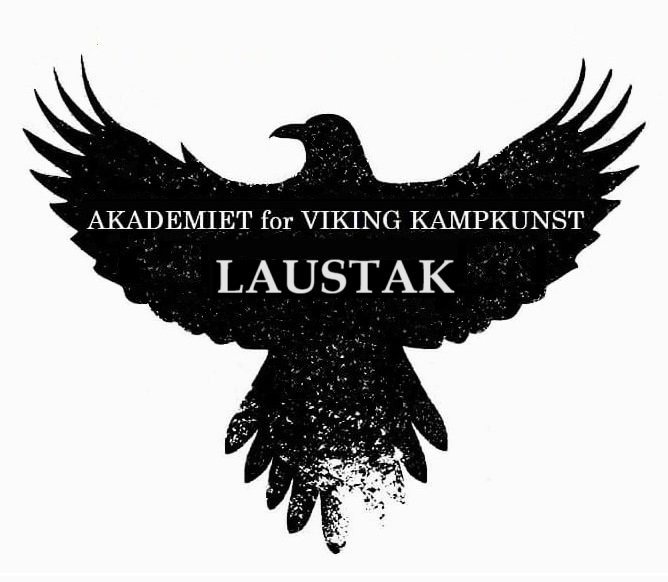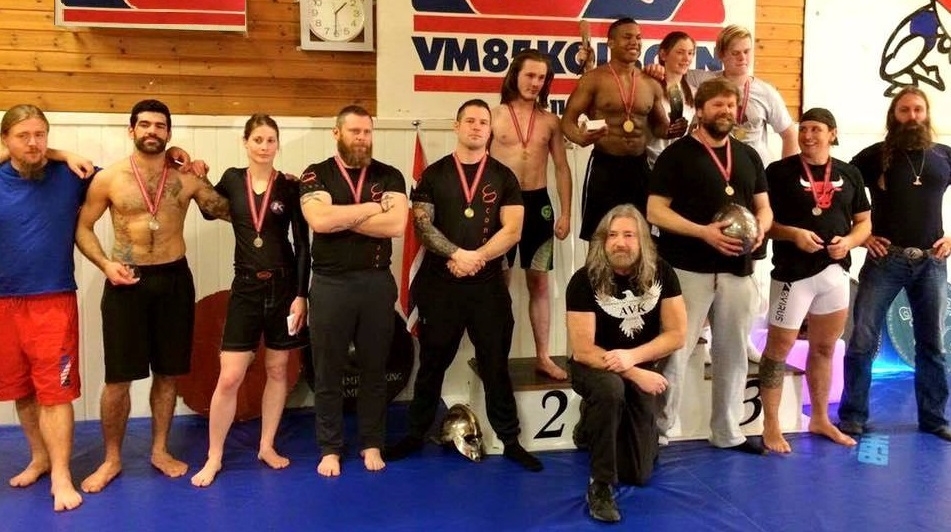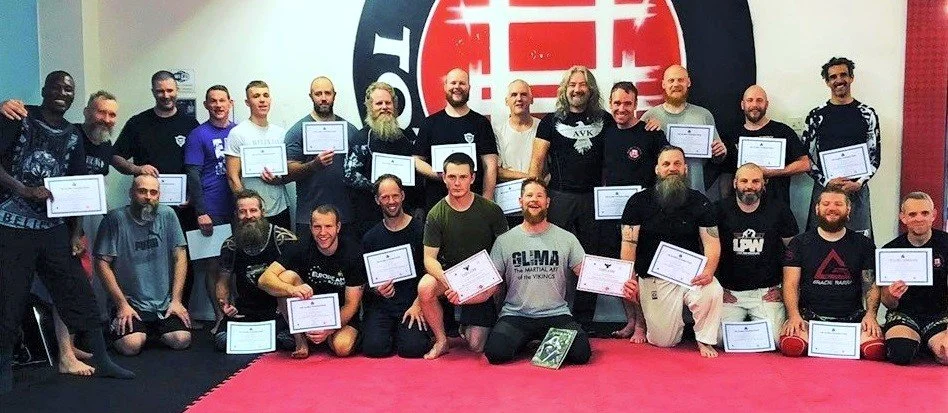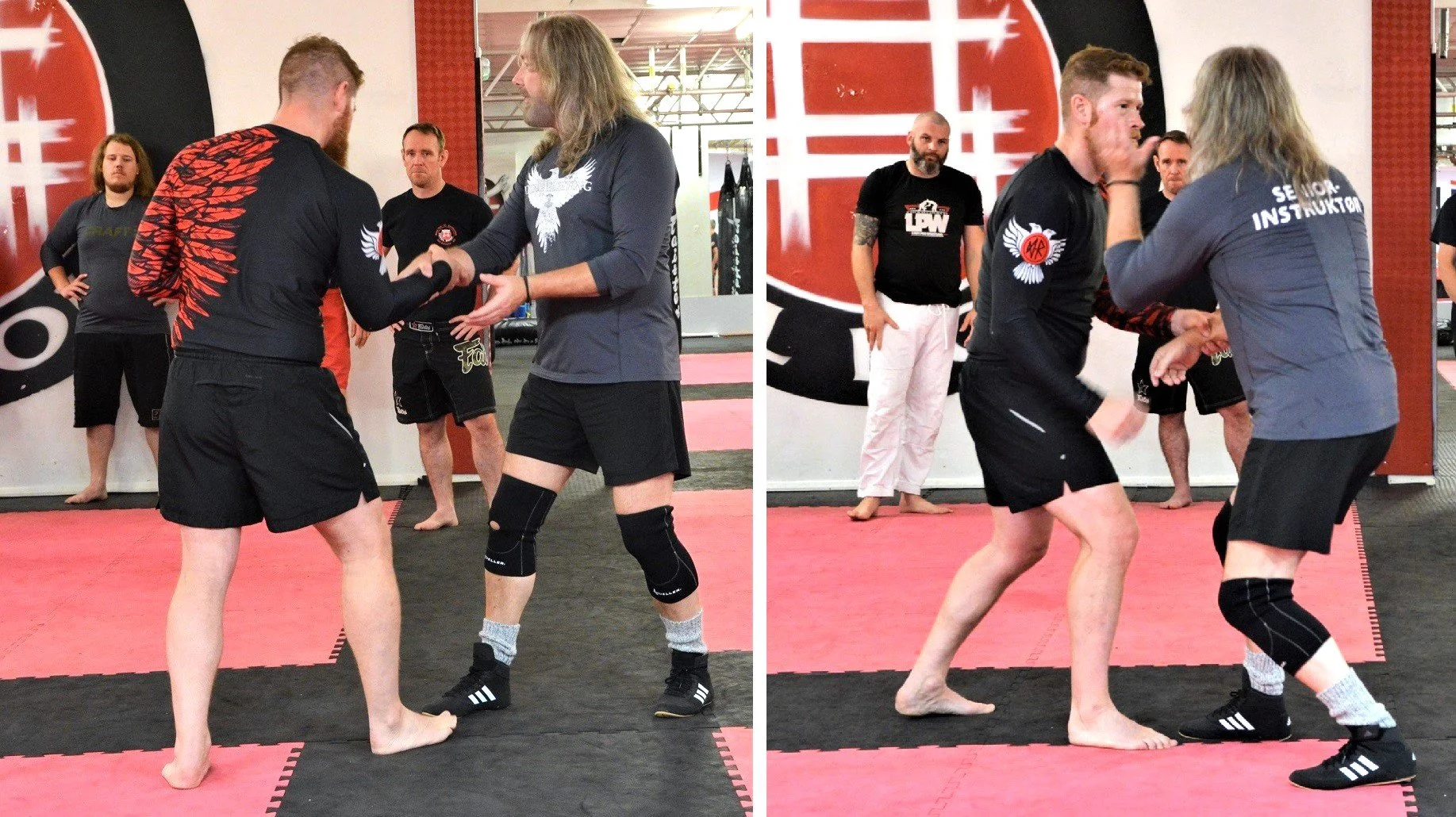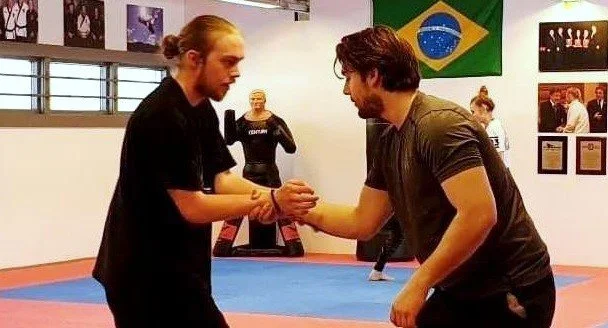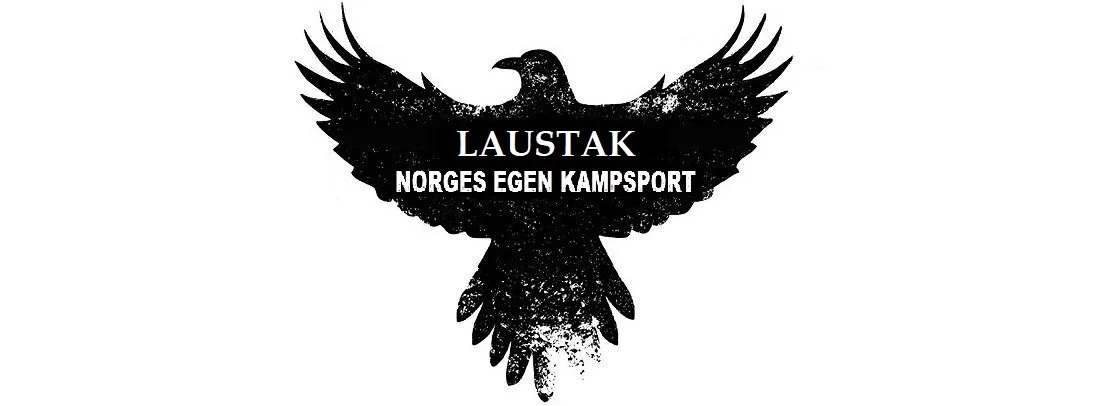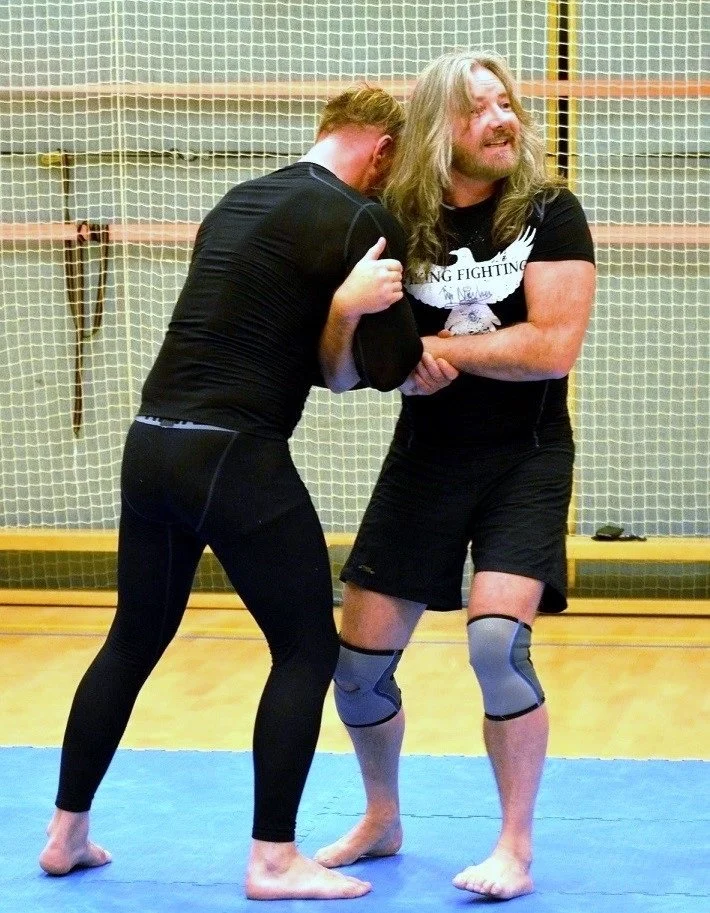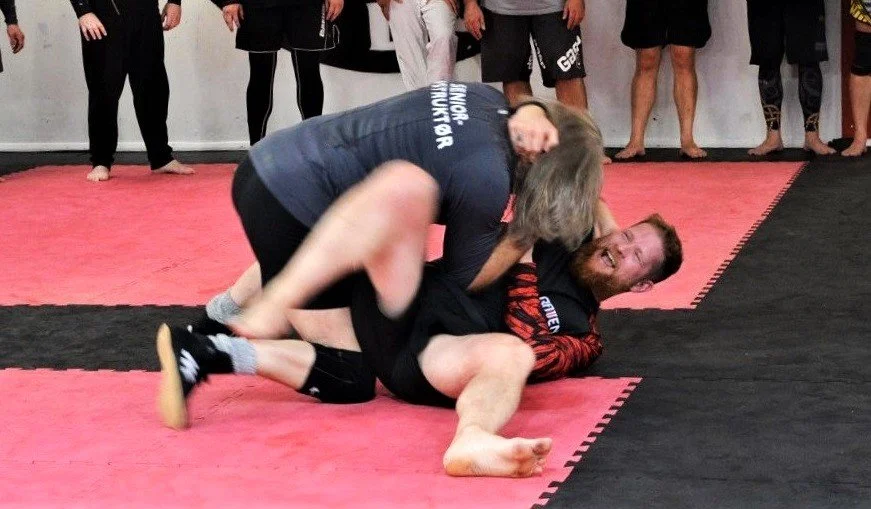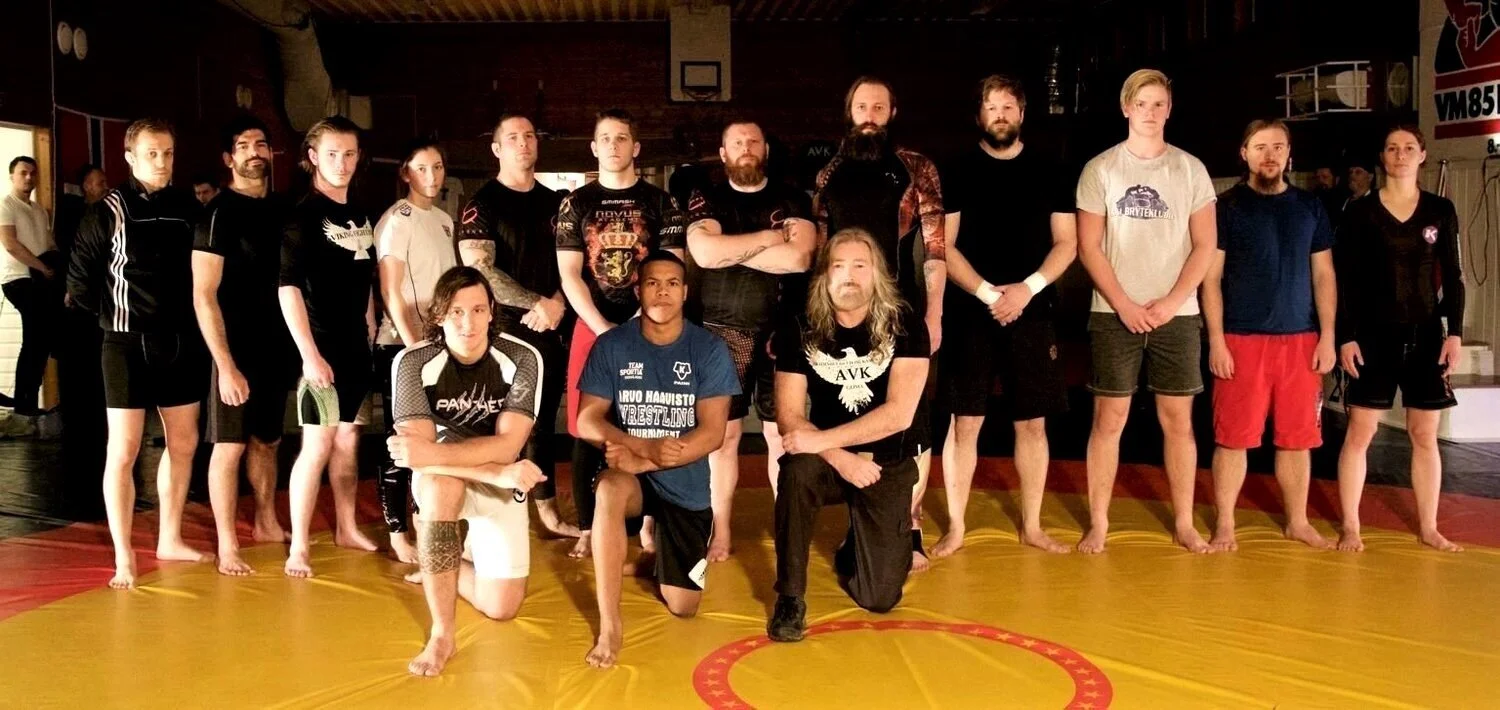Wrestling was the most widespread and most popular sport in Viking Age Scandinavia. It was an important part of Norse society, practiced by males and females of all ages.
Laustak Viking wrestling contains throws, takedowns, sweeps, trips, reaps, pulls, pressure techniques, and grappling on the feet and on the mat. Training in this sport builds strength, stamina, balance, perseverance and a resilient spirit.
Løse-tak glima rules can be found at the bottom of this page.
VIKING WRESTLING by Tyr Neilsen
/Vikings loved all kinds of sports, but the best loved sport in Viking Age Scandinavia, was by far, wrestling.
Over the centuries, this traditional folk wrestling has been known by many names, fang, fangbrögð, leikfang, glíma, farmer wrestling, Scandinavian wrestling, Norwegian wrestling, and of course, Viking wrestling (vikingbryting in Norwegian).
Whether it was as a form of physical, mental or spiritual training, as competition, or as a form of entertainment, Viking wrestling was a major part of Viking Age life. Men, women, and children trained in this sport, and whenever the people of the north gathered, at home, in a village, at a market, or at a Thing, Viking wrestling was always a major attraction.
Viking wrestling was so important in Viking Age society, that their most popular god, Thor, was also the god of wrestling. In fact, the first written mention of Viking wresting is a Norse myth about Thor. It was written in the form of a poem and dates back to the 9th century. The poem involves Thor in a wrestling competition with a magical old woman who is actually old age. The ancient poem was written by Bragi hinn gamli Boddason and Kveldúlfr Bjálfason, who were both of Norwegian descent.
Thor wrestling with old age by Icelandic sculptor Einar Jónsson (1874 – 1954)
In 874 AD, the Norwegian chieftain Ingólfr Arnarson, became the first permanent settler in Iceland, according to the ancient manuscript Landnámabók (Book of Settlements). In the following centuries, Norwegians, and to a lesser extent other Scandinavians, immigrated to Iceland, bringing with them their culture, and their sport wrestling and combat skills.
Norwegians settlers were very protective of their culture, and throughout the centuries, Norse traditions have been preserved and cherished in Iceland. This includes the original form of traditional Norwegian wrestling, which was documented in 13th century Eddas, Icelandic Sagas and Icelandic law books.
Icelandic Jónsbók lovboken (Jonsbok lawbook), compiled in 1281, and based on earlier Norwegian Laws,
TYPES OF VIKING WRESTLING
Icelandic sources tell us of the 3 forms of Viking wrestling; Lausatök, Hryggspenna and Brókartök. Lausatök means loose-grip/free-grip, Hryggspenna means back-hold, and Brókartök means trouser-grip.
In back-hold and trouser-grip, once the grip or hold was taken, it had to be constant. If the grip was broken during a competition, the competitor that had not held their grip, lost the match. In loose-grip, competitors were free to change grips or holds during a wrestling match.
In the 11th century, Icelandic clergy changed the name of Viking wrestling in Iceland to Glíma, which means glimpse or flash in Old Norse.
By the 19th century, the trouser-grip was the most popular form of glíma in Iceland, and there has been a national Brókartök championship since 1888. In 1905, a special leather gripping belt, tied around waist and thighs, was created, and began to be used instead of trousers. This belt, and a contemporary set of rules, led to the development of a new and unique sport called Icelandic glima, which is the national sport.
In Sweden, the original trouser-grip glima, continued to be a popular sport through the centuries, expecially with farmers. Brókartök is still the most popular form of glima in Sweden, where there has been several national glima championships.
Many regions of Scotland were under Norwegian rule or colonization until the 15th century, and many speculate that the Viking back-hold wrestling, Hryggspenna, is the ancestor of Scottish backhold wrestling, the most popular form of folk wrestling in Scotland.
Lousatök (Laustak in Norwegian) is the most popular form of traditional folk wrestling in Norway. Since the late 20th century, Norwegian Laustak techniques have been collected and codified, and in 2009, the Norwegian Laustak Federation established a standard for Laustak Sport competition rules, as well as a system for the teaching of Laustak techniques, which includes grading and certification in Sport Laustak and Combat Laustak.
There have been many Viking wrestling competitions in Norway, especially in the last 30 years. The most prestigeous of these is the Norwegian Laustak Championship.
Today, there is regular Laustak training in sports halls around the world, as well as national and international Sport Laustak competitions.
Thanks to martial artstists and reenactors, Laustak has become the most popular form of Viking wrestling in Norway, UK, Europe, South America, and USA, both as a sport and combat system!
THE LAUSTAK GRIP by Tyr Neilsen
/laustak handsal tyr neilsen
Not only was the Laustak grip the most important hand technique in the martial arts of the Vikings, it was also part of a legal contract in Viking Age society.
The Laustak grip is an extremely strong and flexible grip that is capable of adapting to many situations.
For Viking warriors in unarmed combat, the Laustak grip was used to hold and manipulate parts of an opponent’s body, clothing or weapon. In armed combat, the Laustak grip was used to hold any single-handed weapon. When a grip could mean the difference between life and death, this was the one to have.
The 3 forms of Viking sport wrestling are defined by grips; Laustak is free-grip wrestling (Lausatök in Old Norse), Ryggtak is Back-grip wrestling (Hryggspenna in Old Norse) and Bukse-tak is trouser-grip wrestling (Brókartök in Old Norse).
Hryggspenna and Brókartök both have the restriction to one compulsary grip. In Laustak, you are free to use any grip at any time.
demonstrating handsal and techniques from handsall at uk Lausatak seminar
The Laustak grip is an essential part of sport Laustak right from the very first move, when opponents clasp each other’s forearm at the start of a competition. This is called the 'Handsal', which means that the opponents are friends before the wrestling starts, are friends during the competition, and are friends after the competition, regardless of who wins.
The handsal can be the initiator of other moves, or it can be built upon to control the opponent.
The Handsal was not only an integral part of sport Laustak, it was a legally binding contract in the Viking Age and is still a legally binding contract in Norway today.
Grip strength is important in combat, but strength is not enough, flexibility is also needed. No matter how strong a person’s grip is, it can be broken by using the correct technique. Close quarters combat, grappling and wrestling are not static.
The people in these situations are always in motion, using strength and technique to win. To control an opponent in these situations, a strong yet flexible grip is vital.
In order to throw an opponent, it is necessary to grip an opponent’s arm or some part of the body. To stop an opponent from hitting or throwing you, the first line of defense is often to take a grip of the arm being used against you.
In order to stop a person from using a weapon against you, it is usually necessary to control the weapon by either a gripping the weapon, or gripping a part of the opponent’s arm that is holding the weapon. A strong but static grip is not enough in these situations, and when weapons are involved, a strong static grip can be fatal.
When gripping, the arm muscles are tightened, which usually means stiffness or less flexibility. A strong grip is usually made by gripping with all four fingers towards the thumb.
Although strong, this grip is prone to be ‘broken’ when the object that is being gripped moves into a position that weakens the gripping arm. What makes the Laustak grip so good is that it is flexible whilst still being strong.
The secret of the Laustak grip is the passive index finger, which leaves a three finger grip towards the thumb. By not gripping tight with the index finger as well as the other three fingers, the wrist is more flexible and has more range of motion.
Applying pressure from the index finger to the Laustak grip at certain moments can secure or build on the grip, so long as the index finger isn’t fixed and can relax or release without negatively impacting the grip. This is true for grips on an opponent’s arm, on an opponent’s clothing or on an opponent’s weapon.
Being so versatile, the Laustak grip can range from loose to firm control without cramping the hand or arm. It provides the supple and active grip needed to hold and use.
The Laustak grip is so effortless when used correctly that it makes the four-finger ‘hammer’ grip seem clumsy with slow recovery in comparison.
As there is so much more to the Laustak grip, there will be follow up articles on the Laustak Grip in sport, combat and with weapons.
Link to Laustak grip for weapons: https://www.vikingmartialarts.com/weapon-training/2023/4/5/laustak-weapon-grip-by-tyr-neilsen
SPORT LAUSTAK by Tyr Neilsen
/Laustak in Norway has changed little since Norse people wrestled for sport in the Viking Age. It is fundamentaly still two opponents agreeing to compete, within a set of rules, where the winner is the one standing out of reach of an opponent who is on the ground.
As with all martial arts, techniques must continue to develop in order to stay relevant. In order to ensure this, the Norwegian Laustak Federation established a standard for Sport Laustak competition rules, as well as a system for the teaching of Laustak techniques, which includes grading and certification.
In sports halls around Norway, there is regular Sport Laustak training, as well as Laustak competitions at Viking arrangements, and the Norwegian Laustak Championship.
A Sport Laustak contest can range from an exposive finish immediately after starting with a Handsal, or it can be an exciting contest of will, strength, stamina and technique.
The aim in Laustak is to send an opponent to the ground, either by a throw, trip, sweep or pull, but the competition is not over just because an opponent hits the ground first.
If the contestant who initiated the takedown does not get out of reach fast enough, the contestant on the ground can grab them, and continue the competition by pulling, sweeping, tripping, throwing or grappling from the ground.
Laustak is incredibly effective on the ground, where skill, speed, strength, endurance and balance are as important as when the competitors are standing.
Exciting battles ensue when both glima competitors are on the ground, and the fight is to be the first person on their feet and away.
I feel immensely proud to be able to keep this unbroken line from the Viking Age intact, and preserve Laustak Viking wrestling techniques so they can be handed over to the next generation.
It is an honor to be able to sustain this unique part of the Viking heritage that goes back over a thousand years.
Hávamál - verse 58
Get up early and fight
for what you want
before others take it
A lazy wolf
gets no meat
the sleeping get no victory.
For information about Sport Laustak competition rules, go to this link: https://www.vikingmartialarts.com/laustak/2016/11/22/laustak-competition-rules-by-tyr-neilsen
LAUSTAK COMPETITION RULES by Tyr Neilsen
/glima tyr neilsen
